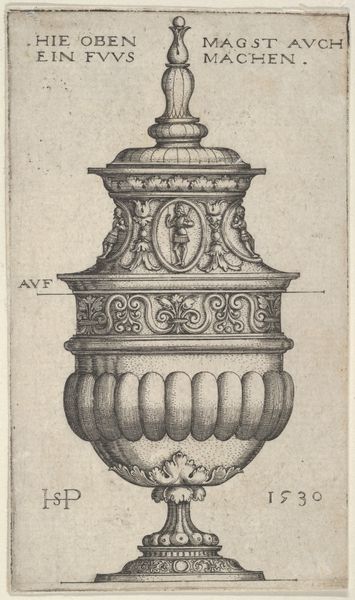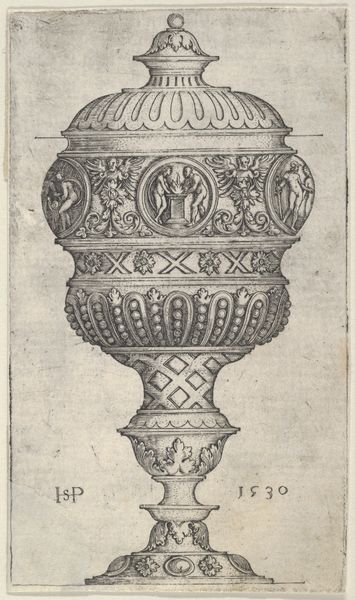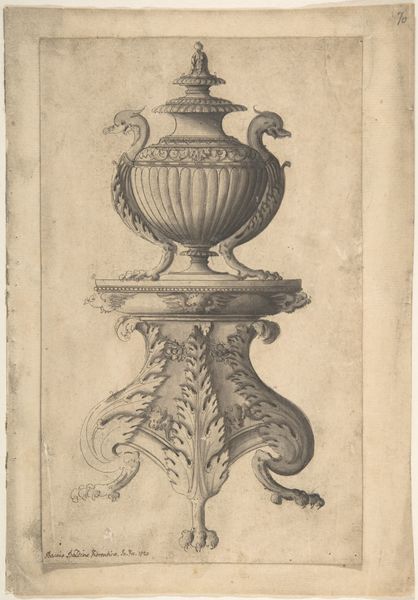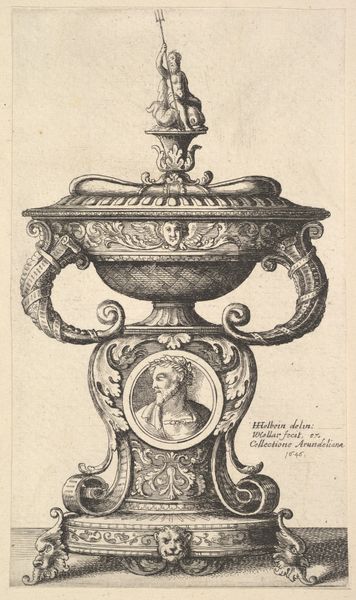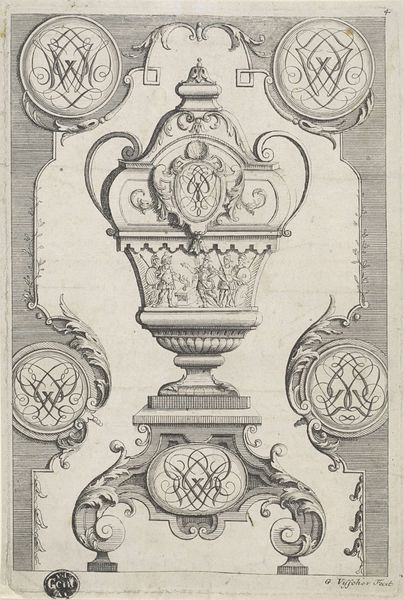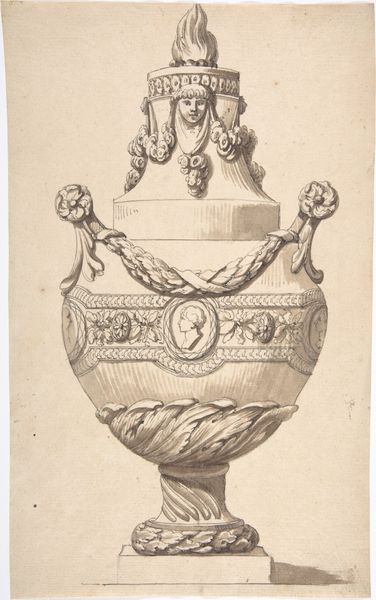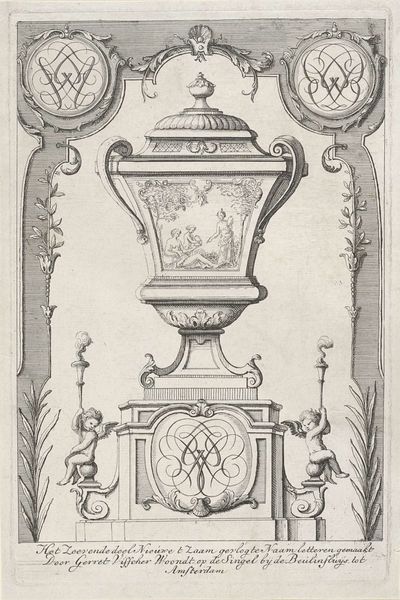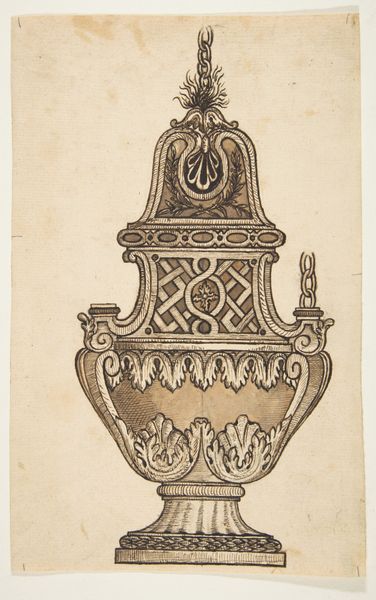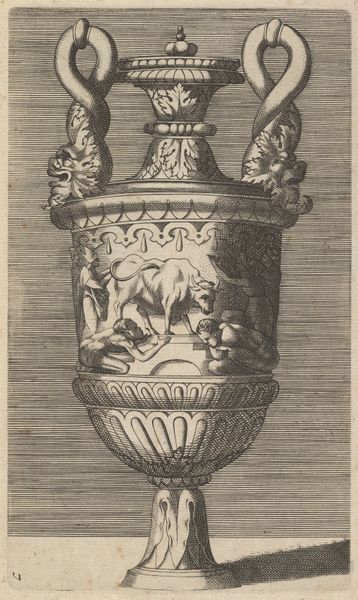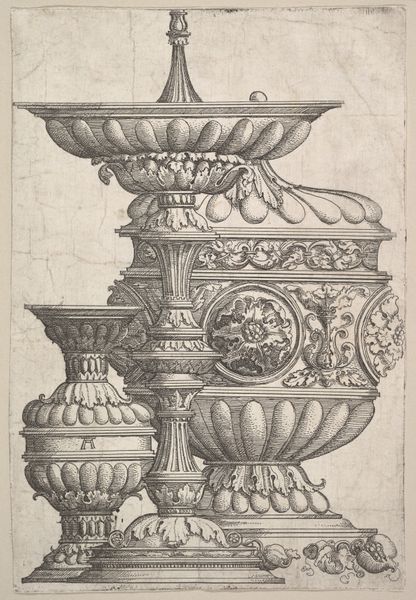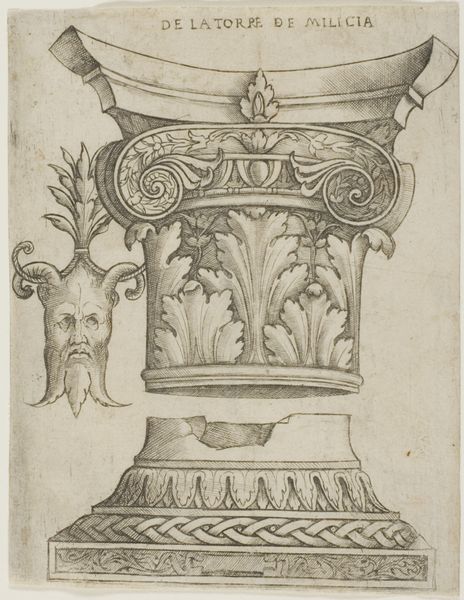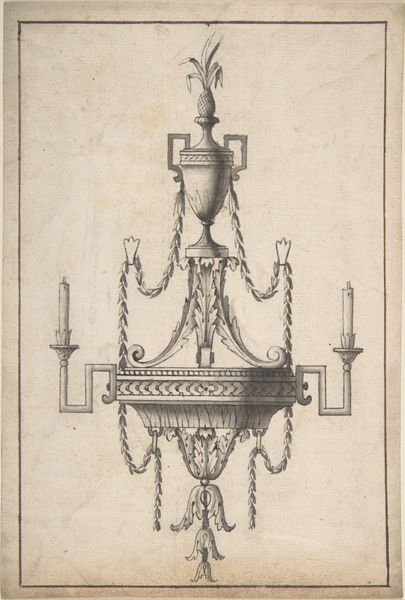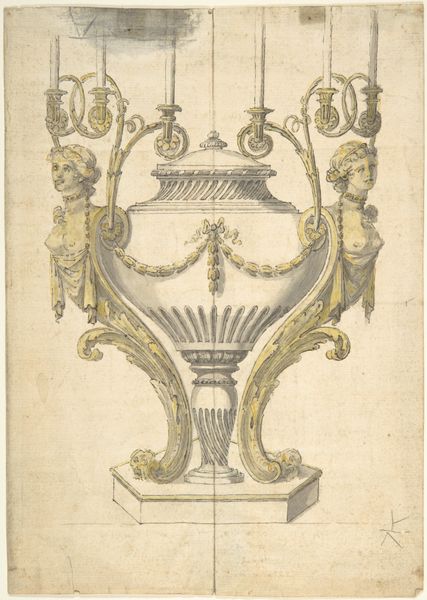
print, engraving
# print
#
11_renaissance
#
geometric
#
history-painting
#
italian-renaissance
#
engraving
Dimensions: 3 5/8 × 2 1/8 in. (9.21 × 5.4 cm) (sheet)
Copyright: Public Domain
Editor: We’re looking at "Double Goblet with Oval Medallions," an engraving from 1530 by Sebald Beham. I'm struck by the level of detail! The textures and shapes… it almost feels like a blueprint for a real, incredibly ornate object. But, well, it’s not, is it? What’s going on here? Curator: That’s a beautiful observation! I love that “blueprint” analogy. It really encapsulates its function. Beham wasn't just depicting beauty; he was offering instructions. This print isn’t just art, it's a design. Imagine a goldsmith in the 16th century, poring over this, translating lines and curves into shimmering reality. See the little figures nestled in those medallions? What stories might they be hinting at, what virtues are embodied in that little musician? What purpose does it suggest? Editor: Okay, I get the design element – like an IKEA instruction manual, only far prettier. And the little figures do add a narrative element. But...a goblet seems kind of mundane to be elevated into a such complex engraving, doesn’t it? Why this level of attention to detail for a drinking vessel? Curator: Ah, but this goblet is more than just a functional object! It’s a symbol of wealth, status, refinement. The Renaissance was mad about elevating everyday objects into works of art, embedding them with classical references and humanist ideals. Notice the lettering at the top? It’s a proverb in German. These things weren't mute; they talked of aspiration. You could almost imagine someone, centuries later, discovering only bits of this object and trying to build out a story of culture and life just from it! Editor: So, this engraving gave instructions to goldsmiths, while communicating social values through classical references. Who knew a goblet could be so chatty! Curator: Exactly! Isn't it amazing how much can be conveyed in a seemingly simple design? It pushes us to reconsider function, form, beauty. Editor: Definitely gives me a whole new appreciation for Renaissance barware!
Comments
minneapolisinstituteofart almost 2 years ago
⋮
Sebald Beham’s hometown of Nuremberg, Germany, was a thriving cultural center, employing nearly 130 goldsmiths in 1514. Covered cups were a Nuremberg specialty. Despite the Lilliputian scale, goldsmiths would have consulted this design avidly for ideas. The helpful Beham added a horizontal line and “AUF” (on) to show where the lid sits.
Join the conversation
Join millions of artists and users on Artera today and experience the ultimate creative platform.
